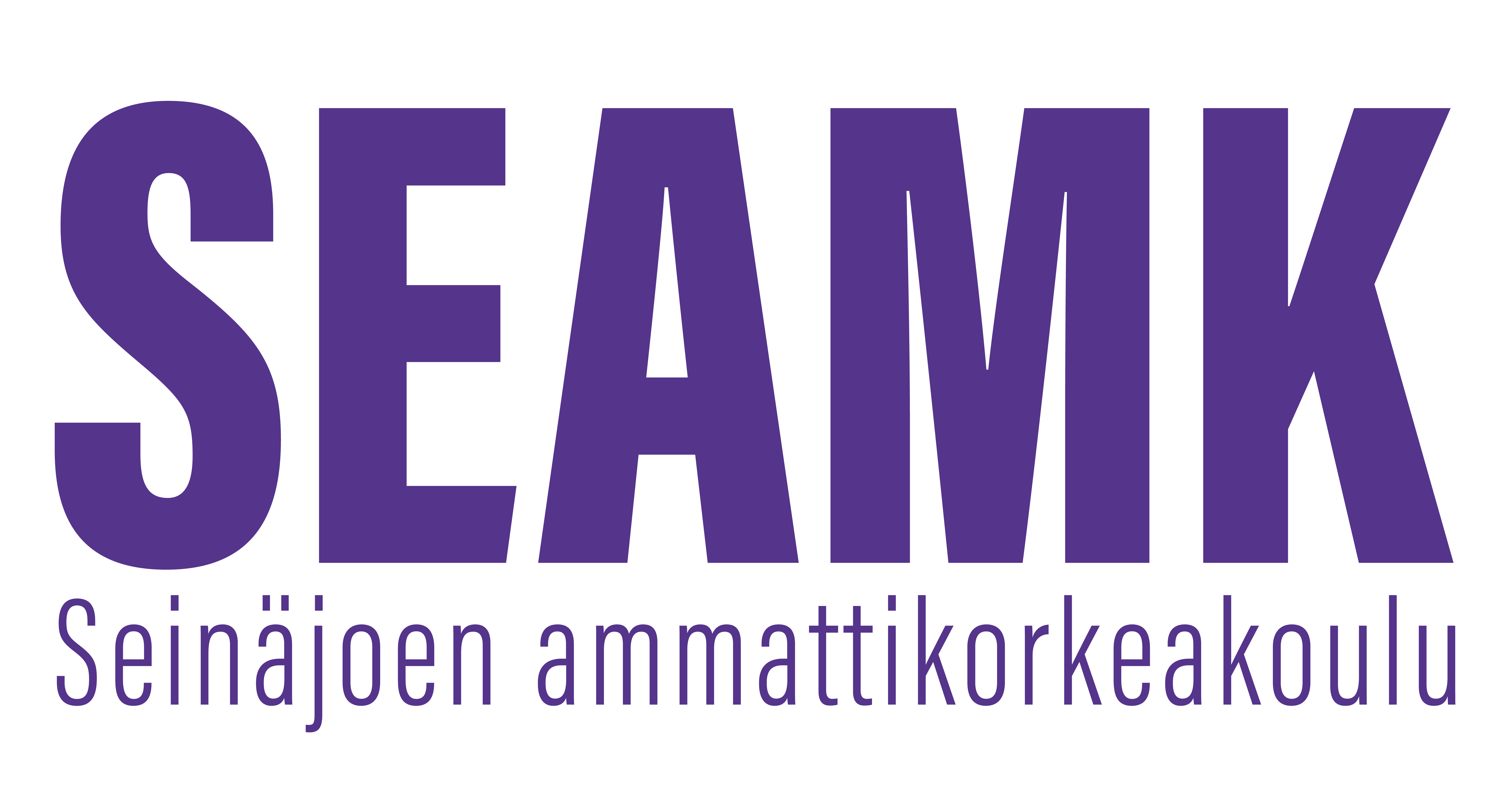Laskentatoimen perusteet ja arvonlisäverotus (6op)
Toteutuksen tunnus: LT00DT34-3002
Toteutuksen perustiedot
- Ilmoittautumisaika
- 01.01.2026 - 09.03.2026
- Ilmoittautuminen toteutukselle ei ole vielä alkanut.
- Ajoitus
- 23.03.2026 - 29.05.2026
- Toteutus ei ole vielä alkanut.
- Opintopistemäärä
- 6 op
- Lähiosuus
- 0 op
- Virtuaaliosuus
- 6 op
- Toteutustapa
- Etäopetus
- Yksikkö
- SeAMK Liiketalous ja pk-yrittäjyys
- Toimipiste
- SeAMK Seinäjoki, Frami
- Opetuskielet
- suomi
- Koulutus
- Tradenomi (AMK), Pk-yrittäjyys
- Opettajat
- Juhani Palomäki
- Ryhmät
-
MPK26Tradenomi (AMK),Pk-yrittäjyys, monimuotototeutus
- Opintojakso
- LT00DT34
Arviointiasteikko
1-5
Tavoitteet
Opintojakson suoritettuaan opiskelija hallitsee ulkoisen laskentatoimen käsitteistön, lakisääteiset tehtävät ja menetelmät. Opiskelija tuntee myös keskeiset säädökset, joihin kirjanpito perustuu, sekä tärkeimmät tulkintalähteet. Opiskelija oppii tuntemaan ja tulkitsemaan kirjanpidon tuottamien raporttien sisältöä ja ymmärtää raporttien merkityksen eri sidosryhmille. Opintojakson suoritettuaan opiskelijalle on muodostunut yleiskäsitys kirjanpidosta ja sen hoitamisesta yrityksessä taloushallinto-ohjelmaa käyttäen. Opiskelija tuntee myös arvonlisäverotuksen perusperiaatteet ja lainsäädännön sekä sen, miten arvonlisäverotus tulee huomioida kirjanpidon yhteydessä. Opiskelija ymmärtää kirjanpitolainsäädännön mukaisen vastuullisuusraportointisäännösten merkityksen erilaisille yrityksille. Opintojakson suoritettuaan opiskelijalla on valmiudet valita opintoja taloushallinnon muilta osa-alueilta.
Kurssin suoritettuaan opiskelija hallitsee ulkoisen laskentatoimen käsitteistön, lakisääteiset tehtävät ja menetelmät. Opiskelija osaa kuvata sen ympäristön, jossa kirjanpito syntyy, ja opiskelija oppii tuntemaan ja tulkitsemaan kirjanpidon tuottamien raporttien sisältöä. Kurssin suorittaminen antaa opiskelijalle yleiskäsityksen kirjanpidosta ja sen hoitamisesta yrityksessä. Kurssin suoritettuaan opiskelijalla on valmiudet valita opintoja laskentatoimen muilta osa-alueilta.
Sisältö
- kirjanpidon lainsäädäntö ja säädösten tulkinta
- arvonlisäverotuksen perusteet ja keskeiset säädökset
- yrityksen kirjanpidon peruskirjaukset arvonlisävero huomioiden
- tilinpäätöksen laatiminen, raportointi ja tulkinta
- taloushallinto-ohjelman käyttö
- kirjanpitolain mukainen vastuullisuusraportointi
Oppimateriaalit
Luennoitsijan luentomateriaali
Opetusmenetelmät
Luennot ja harjoitukset
1. Opetus hybridi
2. Opetus teams
3. Opetus hybridi
Opiskelijan ajankäyttö ja kuormitus
Luennot ja harjoitukset 12 h
Itsenäinen työskentely 150 h
Arviointikriteerit, tyydyttävä (1)
Opiskelija osaa tehdä yrityksen kirjanpidon peruskirjauksia arvonlisäveron huomioiden. Opiskelija osaa hakea lainsäädännöstä tietoa kirjanpitoa ja arvonlisäverotusta varten. Opiskelija osaa käyttää taloushallinto-ohjelmaa kirjanpitotyössä. Opiskelija osaa tulkita yksinkertaista yrityksen tilinpäätöstä kannattavuutta, maksuvalmiutta ja vakavaraisuutta arvioimalla. Opiskelija ymmärtää kirjanpitolain mukaisen vastuullisuusraportoinnin merkityksen.
Arviointikriteerit, hyvä (3)
Opiskelija osaa tehdä monipuolisesti yrityksen kirjanpidon kirjauksia arvonlisäveron huomioiden. Opiskelija osaa laatia yrityksen tilinpäätöksen, tietää tilinpäätökseen liittyvät raportointivelvoitteet sekä osaa kertoa tilinpäätöksen merkityksestä eri sidosryhmille. Opiskelija osaa hakea lainsäädännöstä tietoa kirjanpitoa ja arvonlisäverotusta varten sekä osaa soveltaa tätä tietoa kirjanpidon laatimisessa. Opiskelija osaa tulkita yksinkertaista yrityksen tilinpäätöstä hyvin kannattavuutta, maksuvalmiutta ja vakavaraisuutta arvioimalla sekä tekemällä arviointiensa perusteella johtopäätöksiä yrityksen toiminnan tuloksesta ja taloudellisesta tilasta. Opiskelija osaa käyttää taloushallinto-ohjelmaa kirjanpitotyössä kirjanpitolautakunnan menetelmäohjeistus huomioiden. Opiskelija osaa soveltaa kirjanpitolain mukaisen vastuullisuusraportoinnin säännöksiä yksittäisen yrityksen kohdalla.
Arviointikriteerit, kiitettävä (5)
Opiskelija osaa tehdä monipuolisesti yrityksen kirjanpidon kirjauksia arvonlisäveron huomioiden. Opiskelija osaa laatia yrityksen tilinpäätöksen, tietää tilinpäätökseen liittyvät raportointivelvoitteet sekä osaa kertoa tilinpäätöksen merkityksestä eri sidosryhmille. Opiskelija osaa hakea lainsäädännöstä tietoa kirjanpitoa ja arvonlisäverotusta varten sekä osaa soveltaa tätä tietoa kirjanpidon laatimisessa. Opiskelija osaa tulkita laaja-alaisen yrityksen tilinpäätöstä hyvin kannattavuutta, maksuvalmiutta ja vakavaraisuutta arvioimalla sekä tekemällä arviointiensa perusteella johtopäätöksiä yrityksen toiminnan tuloksesta ja taloudellisesta tilasta. Opiskelija osaa käyttää taloushallinto-ohjelmaa kirjanpitolautakunnan menetelmäohjeistus huomioiden kirjanpitoa laatiessaan. Opiskelija osaa soveltaa kirjanpitolain mukaisen vastuullisuusraportoinnin säännöksiä sekä arvioida näiden säännösten merkitystä yksittäisen yrityksen kohdalla.
